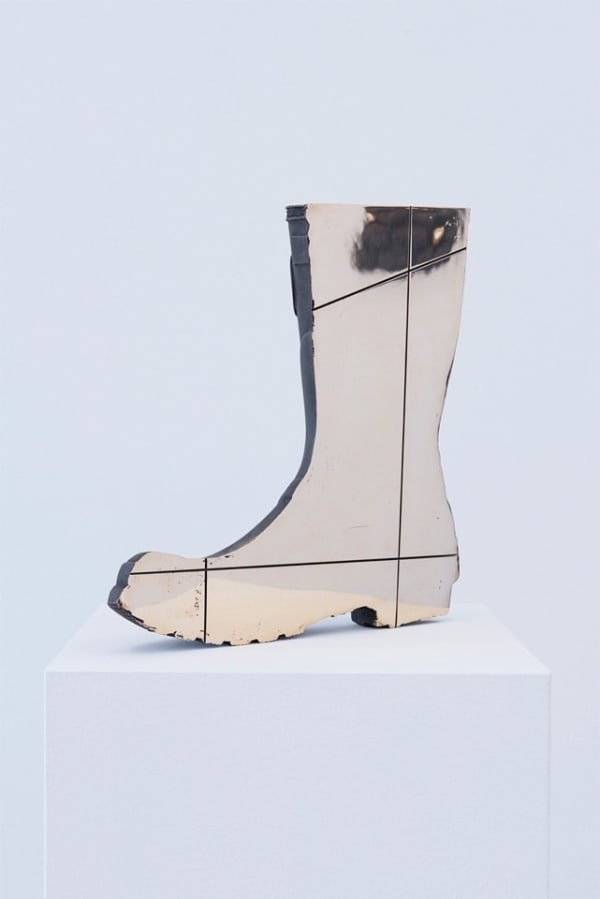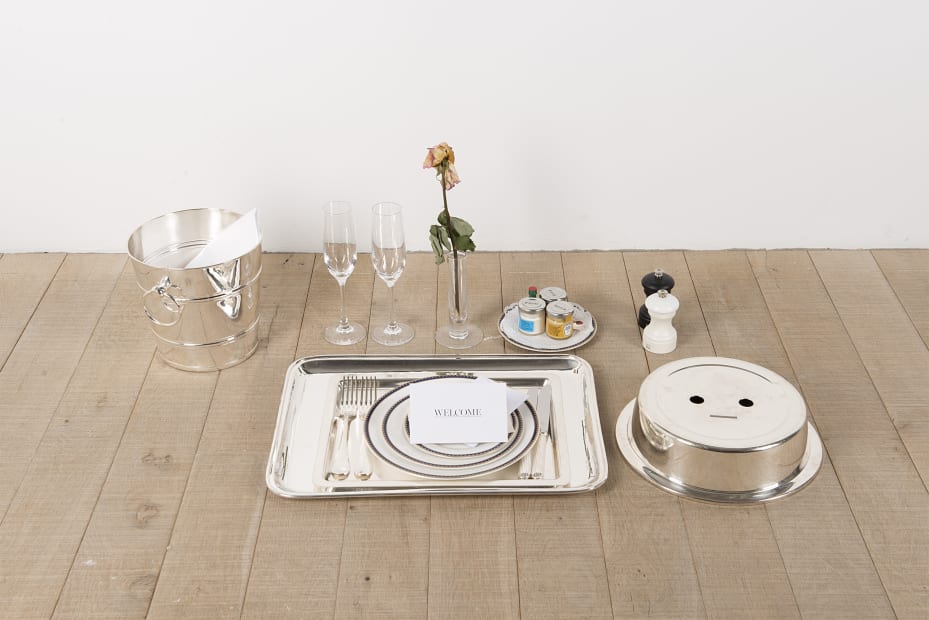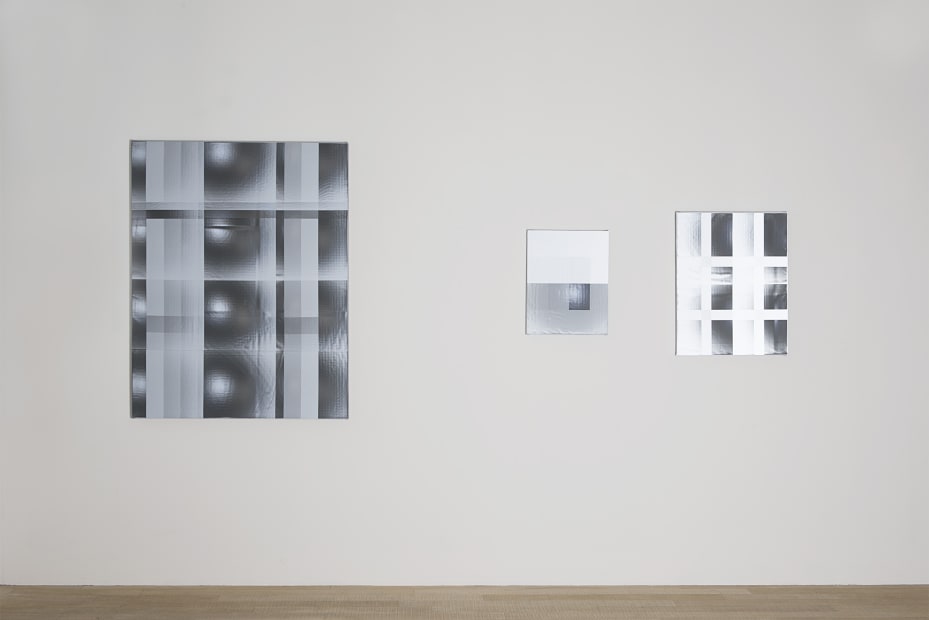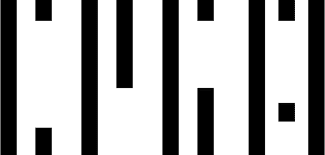Tobias Kaspar: Surface ApparentGalerie Peter Kilchmann, Zahnradstrasse, Zurich
Galerie Peter Kilchmann is pleased to announce its upcoming solo exhibition with Swiss artist Tobias Kaspar. Alongside his newly completed film trilogy “Surface Apparent”, Tobias Kaspar will also exhibit a group of new and recent works consisting of textile and sculptural works, as well as photographs; all related to the large-scale artwork "THE STREET".
April 15 - May 28, 2016
-
 Tobias KasparUntitled, 2015Neoprene, reflective fabric175 x 135 cm (68.9 x 53.1 in.)Unique
Tobias KasparUntitled, 2015Neoprene, reflective fabric175 x 135 cm (68.9 x 53.1 in.)Unique -
 Tobias KasparUntitled, 2015Laser engraved reflective fabric175 x 135 cm (68.9 x 53.1 in.)Unique
Tobias KasparUntitled, 2015Laser engraved reflective fabric175 x 135 cm (68.9 x 53.1 in.)Unique -
 Tobias KasparUntitled, 2015Neoprene, reflective fabric175 x 135 cm (68.9 x 53.1 in.)Unique
Tobias KasparUntitled, 2015Neoprene, reflective fabric175 x 135 cm (68.9 x 53.1 in.)Unique -
 Tobias KasparCocktail, 2015Installation, 5 bronze casts (partly polished), 5 objects in original material7.2 x 28 x 19.5 cm (2.8 x 11.0 x 7.7 in.)
Tobias KasparCocktail, 2015Installation, 5 bronze casts (partly polished), 5 objects in original material7.2 x 28 x 19.5 cm (2.8 x 11.0 x 7.7 in.)
, approx.Unique -
 Tobias KasparBoy Girl, 2016Installation, 2 bronze casts (partly polished), 3 objects in original material9.5 x 13 x 11 cm (3.7 x 5.1 x 4.3 in.)Unique
Tobias KasparBoy Girl, 2016Installation, 2 bronze casts (partly polished), 3 objects in original material9.5 x 13 x 11 cm (3.7 x 5.1 x 4.3 in.)Unique -
 Tobias KasparFacial, 2015Installation, 5 bronze casts (partly polished), 4 objects in original material5.5 x 24.3 x 19.7 cm (2.2 x 9.6 x 7.8 in.)
Tobias KasparFacial, 2015Installation, 5 bronze casts (partly polished), 4 objects in original material5.5 x 24.3 x 19.7 cm (2.2 x 9.6 x 7.8 in.)
, approx.Unique -
 Tobias KasparHunter (IV), 2016Bronze cast, partly polished
Tobias KasparHunter (IV), 2016Bronze cast, partly polished
inklusive weissem Holzsockel (29,5 x 29,5 x 105 cm)28.5 x 28.2 x 6.5 cm (11.2 x 11.1 x 2.6 in.)Unique -
 Tobias KasparHunter (III), 2016Bronze cast, partly polished28.7 x 28 x 5 cm (11.3 x 11.0 x 2.0 in.)Unique
Tobias KasparHunter (III), 2016Bronze cast, partly polished28.7 x 28 x 5 cm (11.3 x 11.0 x 2.0 in.)Unique -
 Tobias KasparHunter (II), 2016Bronze cast, partly polished28.7 x 27.3 x 5.2 cm (11.3 x 10.7 x 2.0 in.)Unique
Tobias KasparHunter (II), 2016Bronze cast, partly polished28.7 x 27.3 x 5.2 cm (11.3 x 10.7 x 2.0 in.)Unique


















